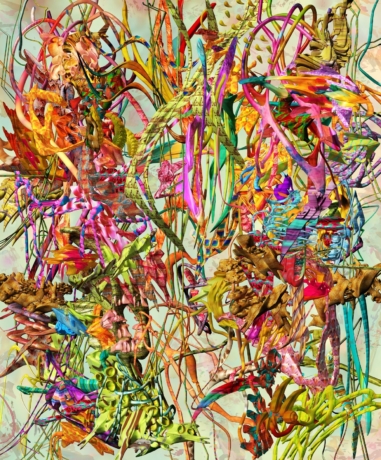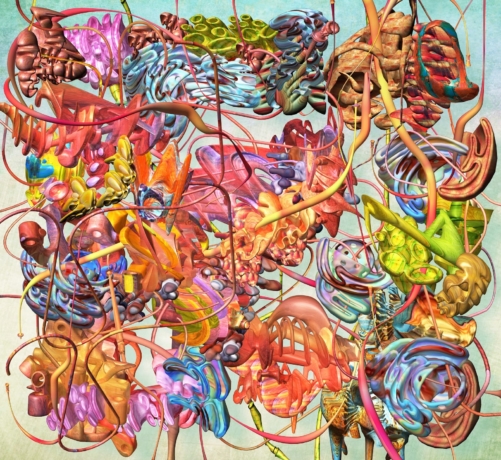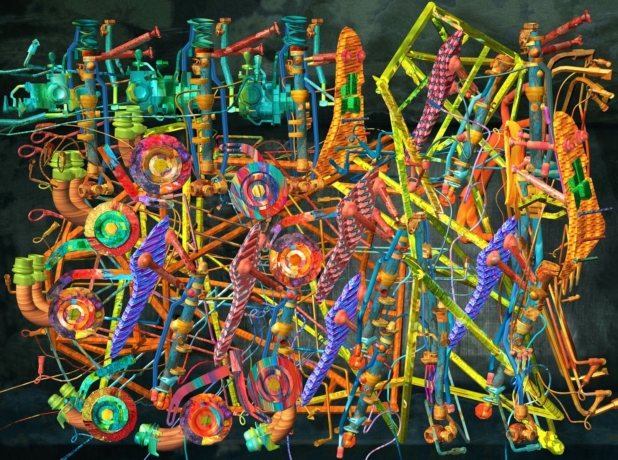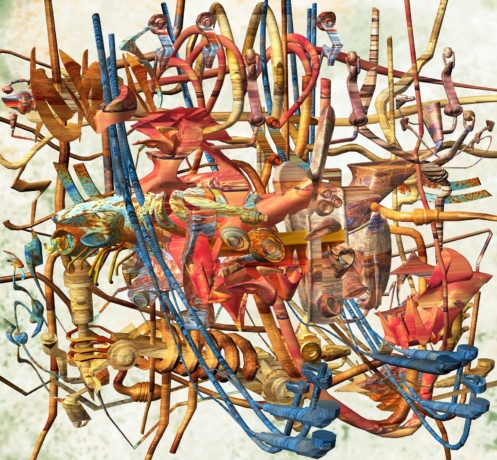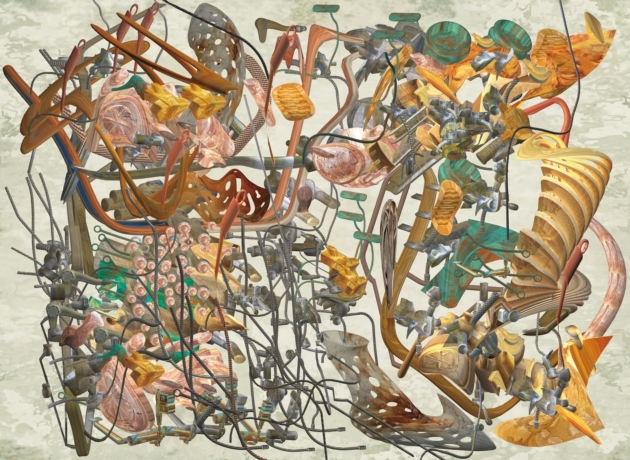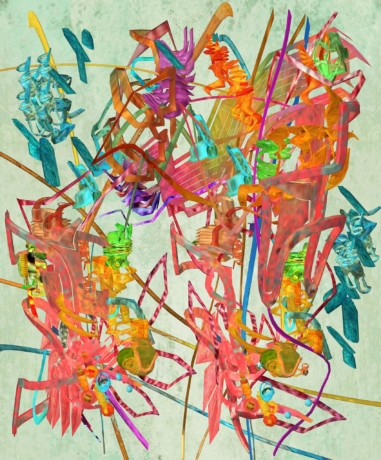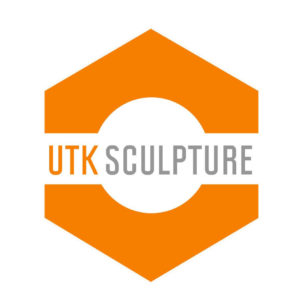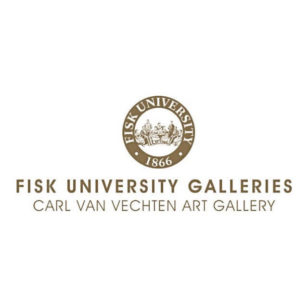RYOTA MATSUMOTO
Website
CV
Memphis, TN | Painting
Bio:
Ryota Matsumoto is an artist, educator, designer, cultural programmer, urban planner, and architect. As a media theorist, he is highly recognized as the iconic pioneer and forefather of the postdigital culture.
Born in Tokyo, he was raised in Hong Kong and Japan. He received a Master of Architecture degree from the University of Pennsylvania in 2007 after his studies at the Architectural Association in London and Mackintosh School of Architecture, the Glasgow School of Art in the early 90s. Over the years, he has studied with Manuel DeLanda, Vincent Joseph Scully Jr., Cecil Balmond, and Giancarlo De Carlo, among others. He collaborated with a cofounder of the Metabolist Movement, Kisho Kurokawa, and with Arata Isozaki, Peter Christopherson, and MIT Media Lab.
As a designer and consultant for Nihon Sekkei Inc. and the Japanese railway, he has worked on high-profile projects including Kyushu University Ito Campus masterplan (2003-2005), the Shinjuku redevelopment project in Tokyo (2009-2012), Bach Mai Hospital in Hanoi (2000), and Qingdao mixed-use development in China (2011).
Matsumoto has presented his work on multidisciplinary design, visual culture, and urbanism to the 5th symposium of the Imaginaries of the Future at Cornell University, the Espaciocenter workshop at TEA Tenerife Espacio de las Artes, New Media Frontier Lecture Series at Oslo National Academy of the Arts, UCI Claire Trevor School of the Arts, iDMAa Conference 2017, Network Media Culture Symposium at CCA Kitakyushu, and NTT InterCommunication Center as a literary critic and media theorist. He curated the exhibition, Posthumanism, Epidigital, and Glitch Feminism at Machida City Museum of Graphic Arts in 2020.
As a composer, video producer and graphic designer, he has worked with Peter Christopherson of Coil and Throbbing Gristle for Japanese Nike commercial, his album, Form Grows Rampant, and early sessions of Amulet Edition.
Matsumoto has served as the MFA lecturer at Transart Institute, University of Plymouth. He works as a research associate and senior consultant for the New Centre of Research & Practice and the City of Dallas Office of Art and Culture respectively. Matsumoto is an honorary member of the British Art Network. He has been active as a guest critic on design reviews at Cornell University, Cooper Union, Columbia GSAPP, Rhode Island School of Design, and Pratt Institute.
Matsumoto is the recipient of Visual Art Open International Artist Award, Florence Biennale Mixed Media 2nd Place Award, The International Society of Experimental Artists Best of Show Award, Premio Ora Prize Italy 5th Edition, Premio Ora Prize Spain 1st Edition, Donkey Art Prize III Edition Finalist, Best of Show IGOA Toronto, Art Kudos Best of Show Award, FILE (Electronic Language International Festival) Media Art Finalist, Lynx International Prize Award, Lumen Prize Finalist, and Western Bureau Art Prize Honorable Mention.He was awarded the Gold Artist Prize from ArtAscent Journal, the 1st Place Prize from Exhibeo Art Magazine, and the Award of Excellence from the Creative Quarterly Journal of Art and Design in 2015 and 2016. His work is part of the permanent collection of the University of Texas at Tyler.
His work, writings, and interviews were published in Kalubrt Magazine, the University of North Carolina Wilmington Journal Palaver, Furtherfield.org, The Journal of Wild Culture, Studio Visit Magazine, Fresh Paint Magazine, H+ Magazine, International Artist Magazine, Made In Mind Magazine, Arizona State University Journal Superstition Review, Creative Review, Creative Boom, Next Nature Network, Rhizome.org, Monoskop, Carbon Culture Review, KooZA/rch, Supersonic Art, Post Digital Aesthetics (Berry and Dieter ed.), Drawing Discourse (University of North Carolina Asheville), Highlike (SEPI-SP editors), and Drawing Futures (The Bartlett UCL), among others.
Matsumoto's multidisciplinary projects have been exhibited recently at Meadows Gallery University of Texas at Tyler, S. Tucker Cooke Gallery University of North Carolina Asheville, Sebastopol Center for the Arts, National Museum of Korea, CICA Museum, Van Der Plas Gallery, ArtHelix Gallery, Caelum Gallery, LAIR Gallery Lakehead University, Limner Gallery, the Cello Factory, University of the District of Columbia, Lux Art Gallery, Studio Montclair, Manifest Gallery, Center for Digital Narrative University of Bergen, Tenerife Espacio de las Artes, Art Basel Miami, ISEA International, FILE Sao Paulo, Nook Gallery, and Arts and Heritage Centre Altrincham. He had solo exhibitions at BYTE Gallery Transylvania University (2015), Los Angeles Center of Digital Art (2016), and Alviani ArtSpace, Pescara (2017).
Statement:
Matsumoto’s work reflects the morphological transformations of our ever-evolving urban and ecological milieus, which could be attributed to a multitude of spatio-temporal phenomena influenced by social, economic and cultural assemblages.
They are created as visual commentaries on speculative changes in notions of societies, cultures and ecosystems in the transient nature of constantly shifting topography and geology.
There is a common thread with regard to visual abstraction in his artworks: the multiplicity of hybrid objects that unfold within their own spatiotemporal coordinates of phase space and are transcribed to an image plane. In that regard, his creative process of drawing henceforth can be defined as the swirls of virtual intensities that are reconfigured as the cartography of spatiotemporal reality. The artwork explores the hybrid combining the algorithmic matrices of transition probabilities and photogrammetry.
Furthermore, the varying scale, the juxtaposition of biomorphic forms, intertwined textures, oblique projections and visual metamorphoses are employed as the multi-layered drawing methodologies to question and investigate the ubiquitous nature of urban meta-morphology, emerging realities of control society, and their visual representation in the context of non-Euclidean configuration. The application of these techniques allows the work to transcend the boundaries between analog and digital media as well as between two- and multi-dimensional domains.
Matsumoto’s process-oriented compositional techniques imbue the work with what we see as the very essence of our socio-cultural environments beyond the conventional protocols of architectural and artistic formalities. His creative approach conjures up the synthetic possibilities of spatial semiotics that emerge as the potential products of alchemical procedures.
